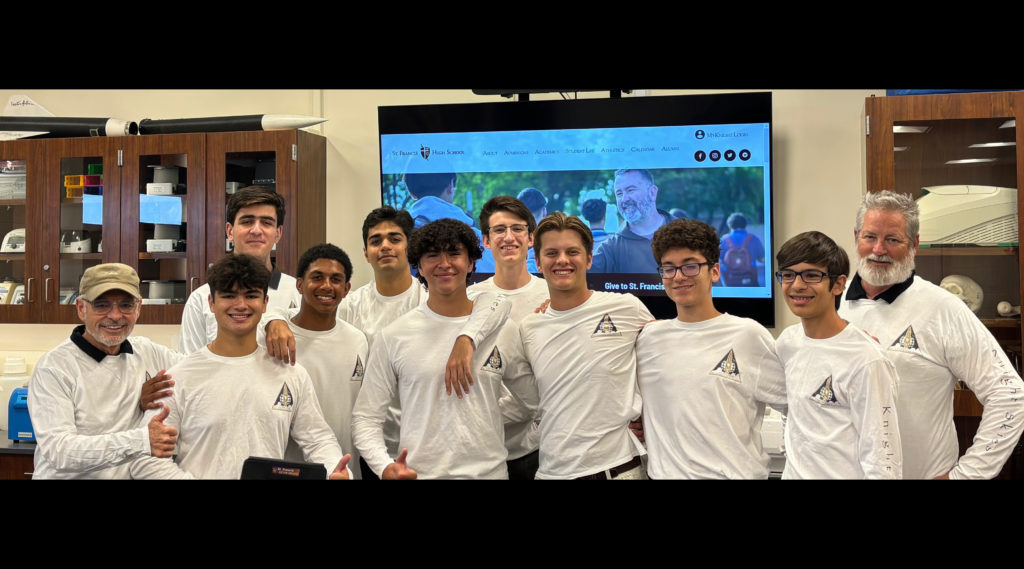A group of students from St. Francis High School in La Cañada Flintridge traveled to Kennedy Space Center in Florida to watch their science experiment rocket into space on Nov. 4.
The students, part of Team E.coli, were selected as the winning squad in St. Francis’ Knight Skies Program, which challenged scholars to come up with an experiment that could be conducted at the International Space Station.
The students on the winning team were Christopher Baghassarian, Luca Bonnici, Vaughn Cross, Carlos Ferreira Gaxiola, Alec Heberger, Malik Husaini, Danial Jamshidi, Rod Khollesi, Robert Milton, and Andrew Tahmazyan.
The experiment aims to study the effects of microgravity on bacterial growth. As the bacteria grows in space over 30 days, the students will have a similar sample back on Earth and will compare the two when the experiment returns, said Mark Fredette, the school’s Religious Studies teacher who launched the program. Two scientists from Harvard Medical School will help with the post-flight analysis.
In addition to St. Francis High, students at Serra High School in Gardena have also sent two experiments into space — first attempting to get a seed to germinate and grow in space in 2023, and then studying the effect of 3D printing in microgravity in March 2024.
Fredette, a space enthusiast who’s also a commercial glider pilot, said watching his students’ experiment lift off into space was one of the highlights of his career.
“I’ve been here 40 years and to see those kids step into those roles, and to be there to watch them as they watched their experiment go up, it was so gratifying,” he said. “What a great blessing that was from heaven.”
Fredette decided to launch the Knight Skies Program and challenge after seeing his wife, Kathleen, the STEM Director for iLead Schools in California, go through a similar experience with one of her students.
More than 60 students competed in the competition.
Once the winning team was chosen, the students raised money to travel to Florida and watch the launch at Kennedy Space Center, where they watched their experiment take off from the fifth-floor NASA observation balcony.
“We were close enough to have the railing of that building vibrate and vibrate through our whole bodies,” Fredette said. “It was a very powerful experience for me, not just physically being there and emotionally, but also spiritually.”
As a religion teacher, Fredette hopes to emphasize to his students and others that God and science go hand in hand.
“I’d love the students to know that you can be a first-rate scientist without having to be a third-rate believer,” he said. “I want them to be comfortable in both worlds, that faith and scientific methodologies are not incompatible. That you can be strong in both.”

